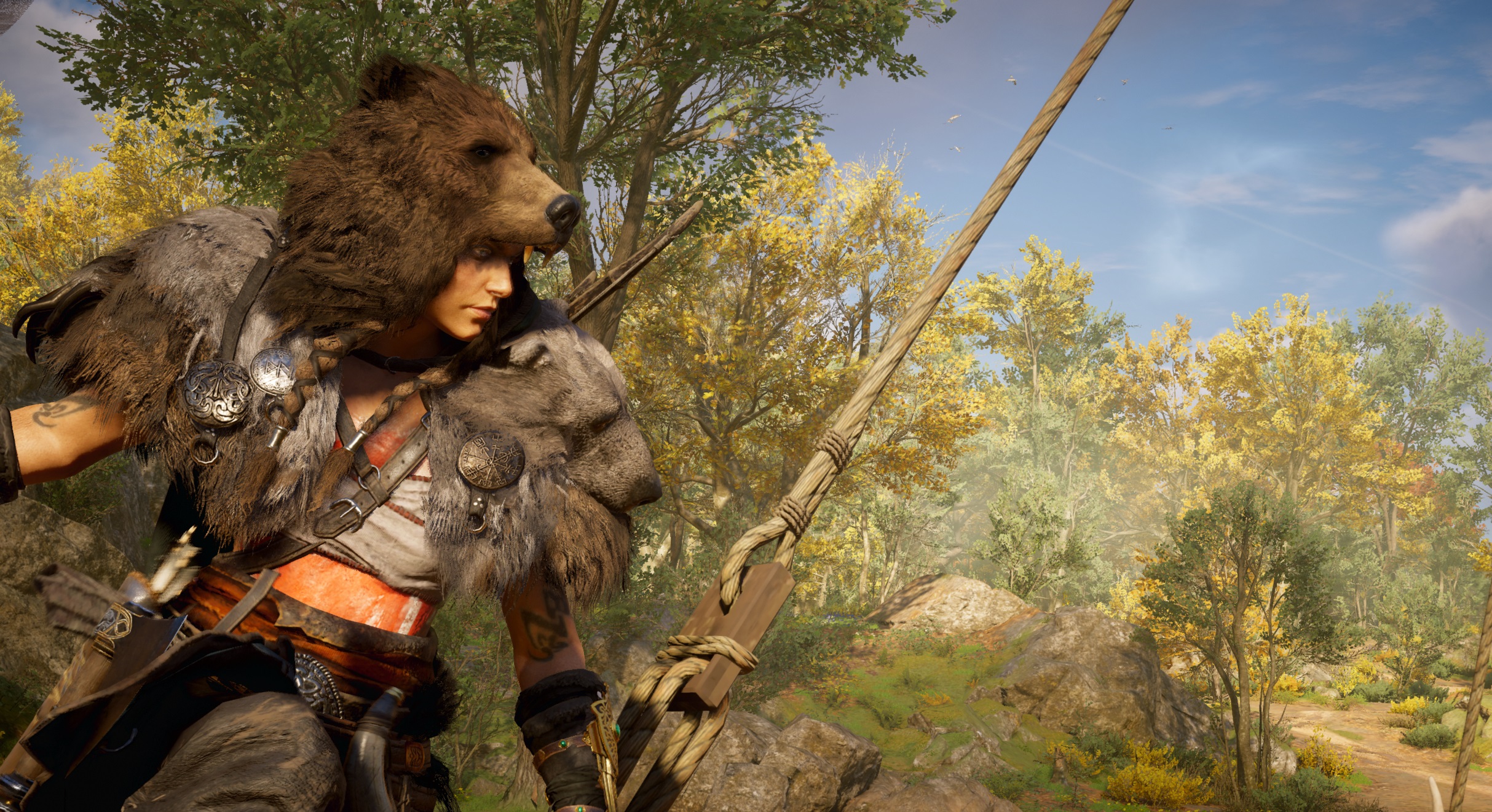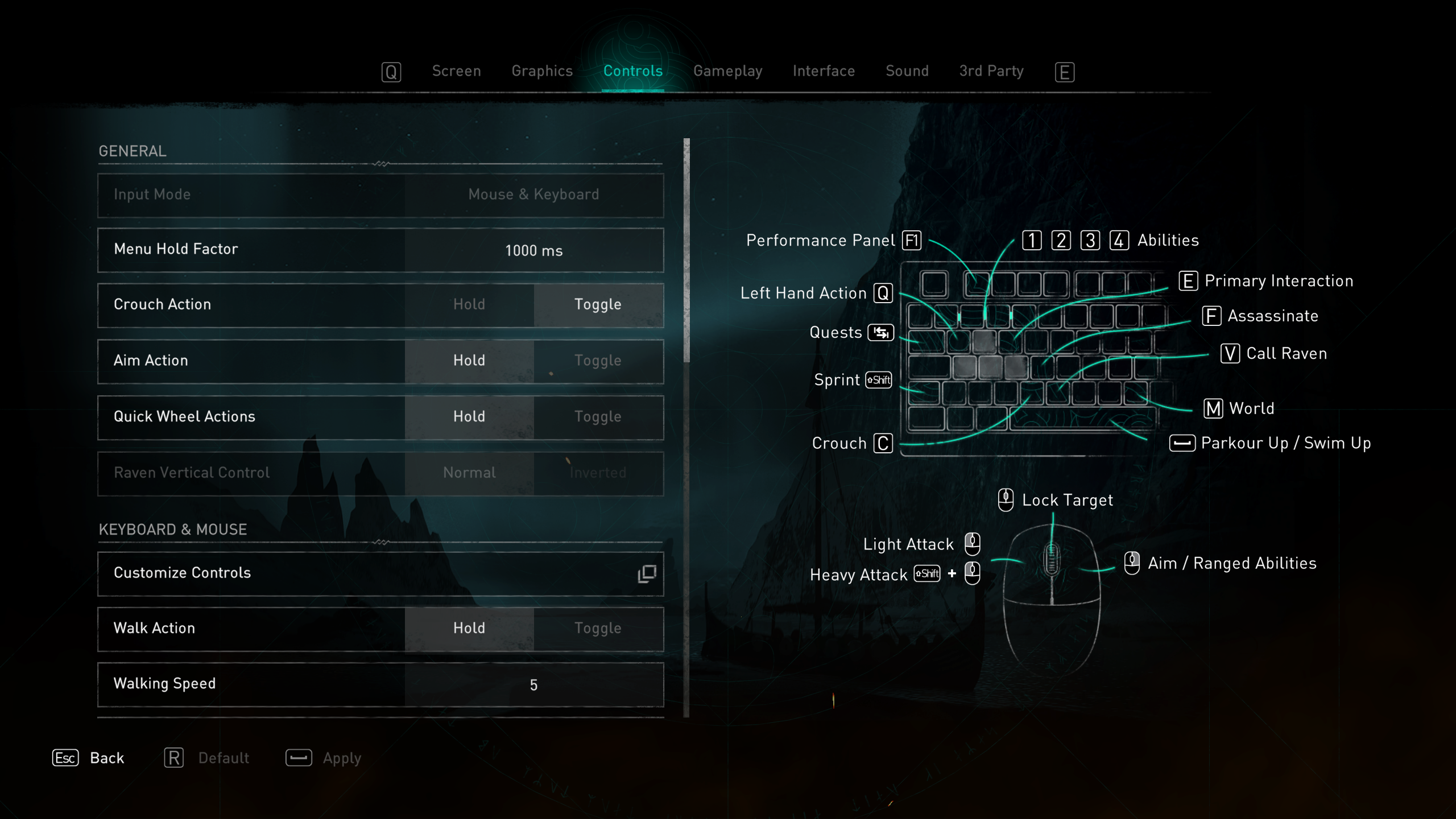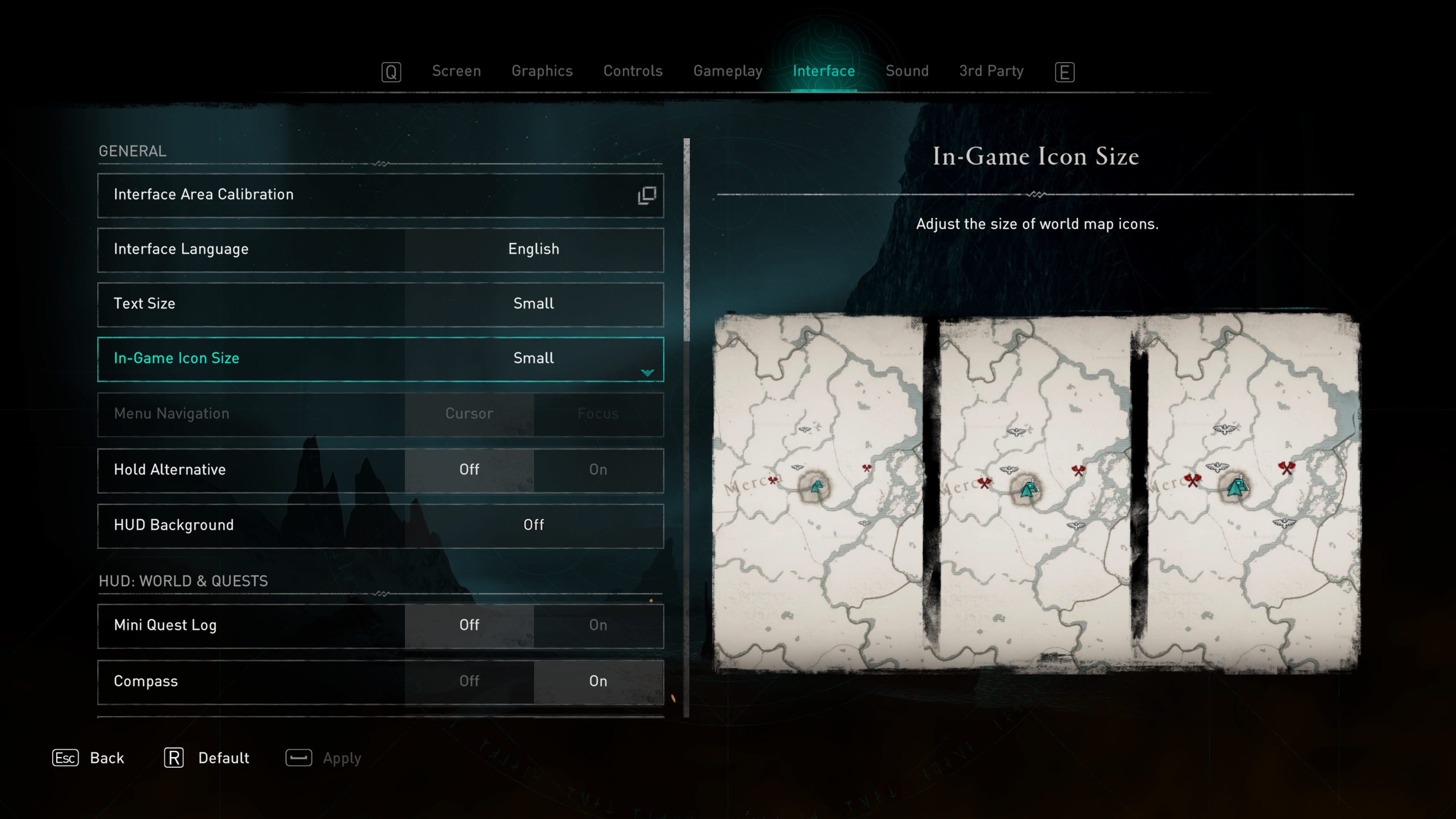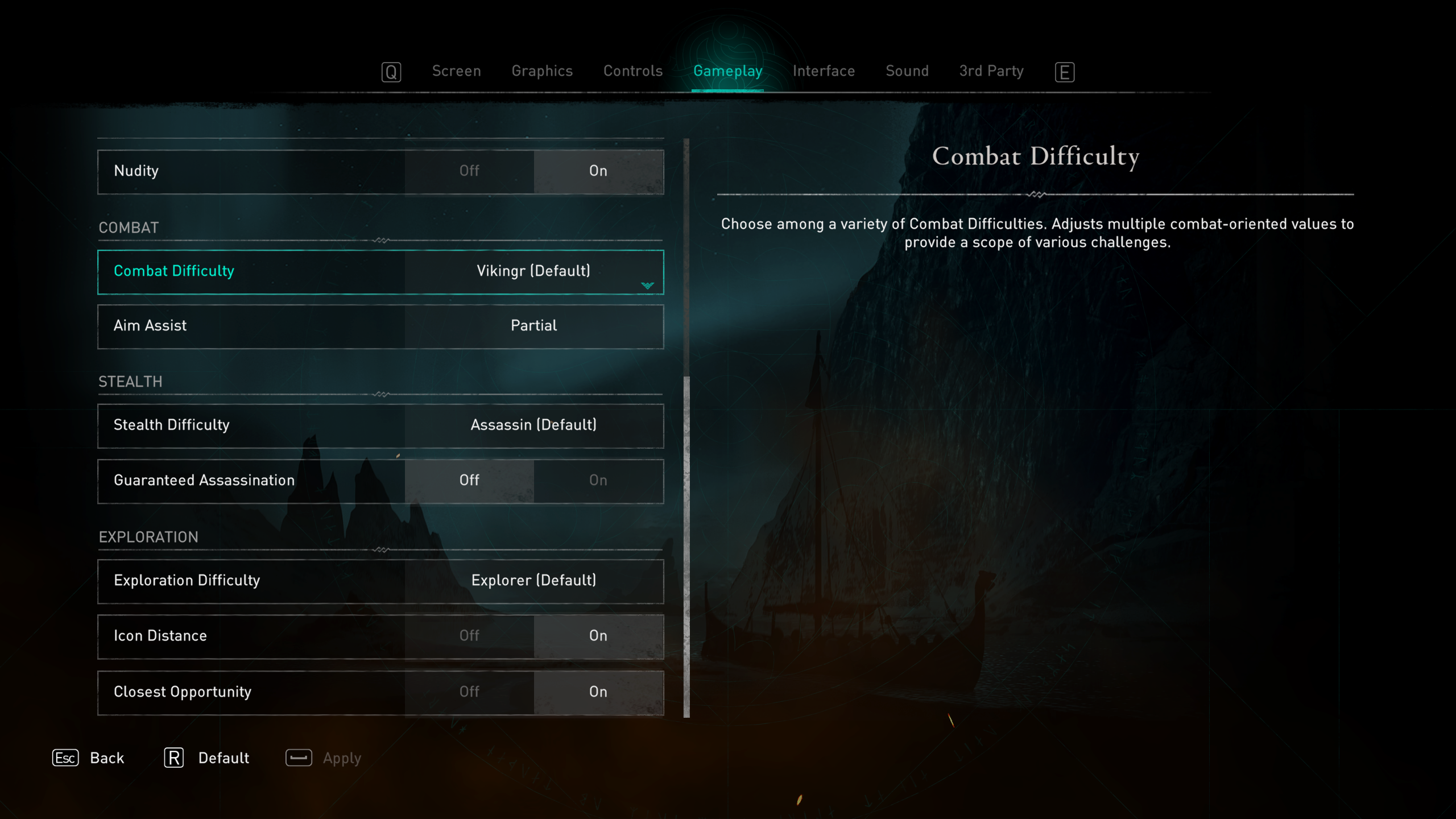Assassin's Creed Valhalla's extensive options should be the new standard for PC gaming
From the difficulty to the HUD, Valhalla sets a high, but far from unobtainable, bar.

It wasn't all that long ago that you could still expect to fire up the latest big multiplatform game on PC and find only tumbleweed when you explored the options menu. These days, you're more likely to find pages and pages of stuff to tweak, from graphics to accessibility settings. Few can boast as expansive a selection as Ubisoft's games, however, and Assassin's Creed Valhalla really pushes the boat out. It's impressive, but it should be standard.
Valhalla is a pretty beefy game. It took me more than ten hours to get past the Norwegian prologue and over to England, and at least one of those hours was spent fiddling around in its incredibly dense menus. That density is somewhat alleviated, thankfully, by plenty of subheadings and tabs that keep everything neat and easy to read, but I'd also suggest that Ubisoft takes a look at how Gears Tactics’ menus are presented, with notched sliders instead of dropdown menus.
The graphics settings contain the usual suspects, broken down into world, environment, textures and post-processing sections. It's fairly comprehensive and benefits from an image preview that lets you see how different options change the game’s appearance. As always, it's accompanied by a meter that shows how much VRAM is being used, though I'm still waiting on the inclusion of something similar for CPUs—to get that information, you have to hit up the benchmarking tool. So there remains some room for improvement, but Valhalla still makes significant strides when it comes to accessibility.
While Valhalla is not an especially difficult game, there are still plenty of obstacles for players with visual or motor impairments, as well as anyone just wanting something a bit breezier, with lower stakes. Conveniently, every tab has a slew of ways to solve these obstacles.
Even the basic difficulty options have an extra layer of refinement. Instead of just choosing to make everything broadly easier, you can set the difficulty for each of the game’s pillars: combat, stealth and exploration. You get that choice right at the start, but you can change it at any time. Each pillar also has further settings that you can tweak. Combat, for instance, has four difficulty settings, from easy to very hard, but independent from that is the ability to change the aim assist. So you can have very hard combat and still have full aim assist.
I typically use a gamepad for action games like Assassin's Creed, so I've always appreciated the ability to remap the controls instead of being limited to some presets. This time, it's possible to swap the right and left sticks, too. If you prefer to use mouse and keyboard, you can also change the walk speed, swap to left-handed mouse navigation, and customise the aiming and mouse sensitivity independently. For both methods, you can choose to use either toggle or hold for every relevant action, like crouching or running. For quick time events, there's a trio of options, so you can hold, press or hammer the button. Ubisoft has gone really granular, so you can even change how long you have to spend pressing the button when you're told to hold it in the menu. Maybe you're in a rush. Maybe you've got a sore thumb.
Predictably, there's a lot of stuff going on in Valhalla's HUD, but you can change it all, or just get rid of it entirely. As well as being able to turn off every little indicator or bit of screen clutter, you make reading it a whole lot easier. The size of text and icons, both in the interface and subtitles, can be changed, and you can add backgrounds to HUD elements and dialogue to increase their legibility. As long as nobody pinches my glasses, I'm fine with the small default settings, but I was thankful for those extra pixels when I switched from my desk to my sofa and started playing on the TV. Along with the subtitles, there's also a closed captioning option.
Keep up to date with the most important stories and the best deals, as picked by the PC Gamer team.
Like several games over the last couple of years, Valhalla has text to speech menu narration, though it seems to just be in English at the moment. As well as being able to toggle it on and off, you can also adjust the pace, volume and whether the narrator is male or female. Speaking of volume, audio’s another place where Valhalla covers a lot of ground. If you're struggling to make out the dialogue but find subtitles distracting, you might want to give the dialogue boost a try. The dynamic range of the audio can also be fiddled with, creating a larger or smaller gulf between the loudest and quietest sounds. The frequency of the music can be changed, too, and you can activate a collision audio cue to tell you when you can't move past an obstacle.
There are plenty of quality of life improvements beyond the menu, of course. I've been getting a lot of use out of the expanded automation. Odyssey let you tell your horse to follow the road and head towards markers, and Valhalla now lets you do that with your ship. You'll be spending a lot of time navigating England's rivers, and being able to kick back and listen to some songs or tall tales while your crew gets you to where you’re going makes each trip a lot more pleasant. England's so massive that sometimes I cut some corners and use regular fast travel, but putting your ship or mount in auto is a great middle ground that gets you to your destination quickly without sacrificing the joys of travelling up and down what is one of gaming’s most fetching open worlds.
Most of these options can be found in other games individually, but Valhalla is just a lot more comprehensive. Watch Dogs Legion, which was developed concurrently and just arrived last week, shares the majority of them, but even it doesn’t have the granular difficulty modes or the option to turn on HUD backgrounds. You can expect Immortals Fenyx Rising, due on December 3, to be similar. It's great, but it shouldn’t be remotely noteworthy. These are the things that every developer and publisher should be considering; really, they should be looking to go even further.
This isn't the part where I bemoan the state of games and wonder if these sorts of considerations will ever really be the norm, because increasingly it seems like accessibility and, more broadly, giving players more control over their games is a very high priority for a wide range of companies, from indies to big publishers like EA. Colourblind mode, for instance, used to be a novelty, but now it's the sort of thing that I notice when it's absent, even if I've never used it. As more developers make the effort, these things become hard baked into menus.
If you’re wondering how Valhalla is beyond accessibility and options, give Steven's Assassin's Creed Valhalla review a read. It took me a while to warm to it, but after spending the weekend chopping off Saxon heads and growling at everyone, I'm hooked. Eivor might be even more of a badass than Kassandra.
- AC Valhalla guide: 6 top tips
- AC Valhalla romance: Find love in Dark Ages Britain
- AC Valhalla armor: The best you can find

Fraser is the UK online editor and has actually met The Internet in person. With over a decade of experience, he's been around the block a few times, serving as a freelancer, news editor and prolific reviewer. Strategy games have been a 30-year-long obsession, from tiny RTSs to sprawling political sims, and he never turns down the chance to rave about Total War or Crusader Kings. He's also been known to set up shop in the latest MMO and likes to wind down with an endlessly deep, systemic RPG. These days, when he's not editing, he can usually be found writing features that are 1,000 words too long or talking about his dog.




